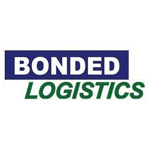Guide to Cloud Inventory Management for Warehouses
In today’s fast-paced supply chain environment, efficient inventory management is essential for operational success. Traditional inventory tracking systems, often dependent on manual processes or on-premise software, are proving inadequate in handling the complexities of modern logistics.
The shift toward cloud-based inventory management solutions has revolutionized warehouse operations by offering real-time tracking, automation, and seamless integration with other supply chain systems. These tools help businesses optimize stock levels, enhance warehouse efficiency, and achieve greater supply chain visibility.
This blog explores the key features, advantages, and impact of cloud-based inventory management on warehouse operations—and how businesses can leverage these innovations to stay competitive.
1. Understanding Cloud-Based Inventory Management

Cloud-based inventory management is a digital solution that enables businesses to track, analyze, and manage inventory data in real time using internet-connected systems. Unlike traditional inventory software that requires on-premise infrastructure, cloud-based solutions are hosted on secure remote servers, offering seamless access from anywhere.
How It Differs from Traditional Systems
- Real-Time Data Access: Unlike static, locally installed software, cloud platforms allow instant access to inventory data from any location.
- Remote Warehouse Management: Warehouse teams and supply chain managers can oversee inventory levels, shipments, and forecasts remotely, enhancing operational flexibility.
- Automation Reducing Errors: Cloud-based systems integrate automation tools that minimize human errors and improve inventory accuracy.
2. Key Features of Cloud Inventory Management Systems
Real-Time Inventory Tracking
Cloud-based inventory systems provide businesses with up-to-the-minute stock visibility, ensuring optimal warehouse efficiency and preventing stockouts or overstocking.
Integration with Other Systems
Modern cloud inventory platforms seamlessly connect with ERP (Enterprise Resource Planning), Warehouse Management Systems (WMS), and Transportation Management Systems (TMS), creating a synchronized supply chain.
Scalability and Flexibility
These systems can easily scale to accommodate business growth and evolving complexities, making them suitable for startups and large enterprises alike.
Inventory Optimization Tools
In the near future, cloud platforms will include AI-powered analytics and predictive modeling to assess demand trends and suggest optimal stock levels, improving inventory forecasting.
3. The Advantages of Cloud-Based Inventory Software for Warehouses

Increased Efficiency
Automated workflows reduce time spent on stock counts, order management, and inventory reconciliation, allowing warehouses to focus on higher-value tasks.
Cost Savings
Cloud-based inventory solutions eliminate the need for heavy upfront investments in infrastructure and ongoing maintenance costs associated with traditional inventory systems.
Better Collaboration
By centralizing inventory data, companies can improve communication between teams, suppliers, and distributors, reducing delays and inefficiencies.
Improved Accuracy
Automated tracking reduces human error in stock management, ensuring better data accuracy and fewer discrepancies.
4. How Cloud-Based Logistics Tools Improve Supply Chain Performance
- Warehouse and Fulfillment Center Synchronization: Cloud inventory systems align warehouse inventory with multiple fulfillment locations, ensuring faster order fulfillment.
- Better Demand Planning: Companies can analyze demand trends in real time, leading to smarter restocking decisions and reduced supply shortages.
- Support for Just-in-Time (JIT) Inventory: By optimizing stock levels, cloud-based platforms enable lean operations, minimizing storage costs and waste.
5. Choosing the Right Cloud Inventory Management Software

Key Factors to Consider
- Customization and Integration: Ensure that the software integrates with existing business tools (ERP, WMS, TMS) and allows customization based on operational needs.
- User-Friendliness: A simple, intuitive interface ensures ease of use for warehouse staff and supply chain managers.
- Security and Compliance: Data protection and adherence to industry regulations (such as ISO/IEC 27001) should be a top priority when selecting a provider.
Conclusion
Cloud-based inventory management is revolutionizing warehouse operations by bringing real-time tracking, automation, and improved collaboration to supply chains. These systems offer increased efficiency, cost savings, and enhanced accuracy—essential benefits for modern businesses.
As supply chains become more complex and consumer demand for fast, accurate deliveries continues to grow, transitioning to a cloud-based inventory system is no longer optional—it’s a competitive necessity.
Streamline Your Warehouse Operations with Cadre Technologies
Managing your inventory efficiently is crucial in today’s fast-paced logistics environment. Cadre Technologies’ cloud-based warehouse management solutions empower businesses with real-time visibility, seamless system integration, and automation to optimize inventory accuracy and improve fulfillment speed.
Ready to take your warehouse to the next level? Discover how Cadre Technologies can help you enhance efficiency and reduce costs.










